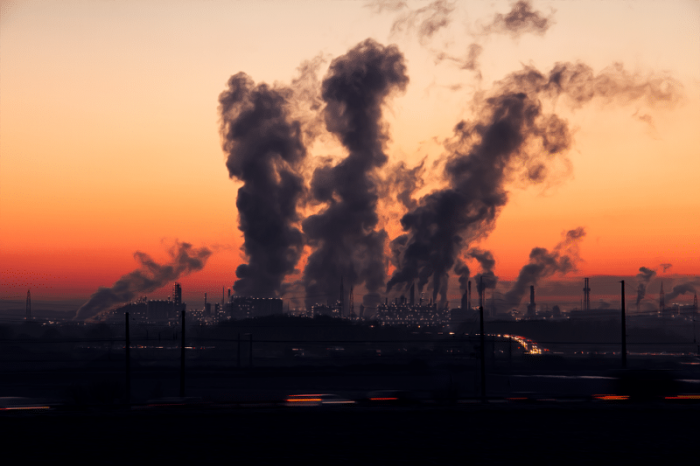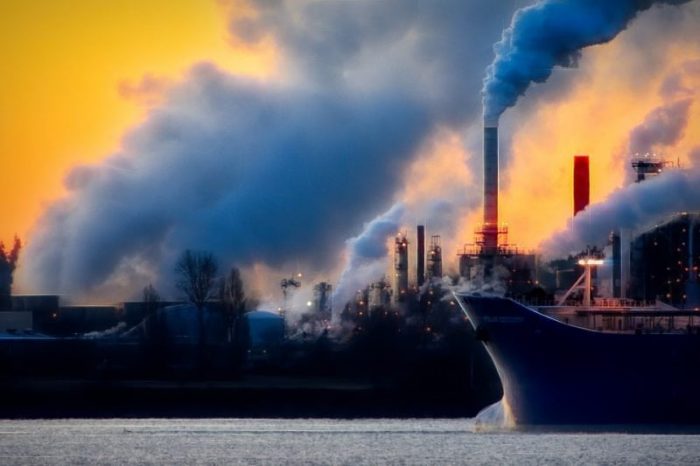
As more and more research is done, the harm done by pollution becomes ever clearer. A new report recently published by The Lancet Commission on pollution and health reveals that in 2015 pollution caused the deaths of around 9 million people, and that it kills about that amount every year.
In total, pollution accounts for one in every six deaths worldwide, which makes it the largest killer of people around the globe, killing more people than war, famine, and disaster. Deaths from pollution-related illnesses like cancer and heart disease are three times higher than the combined deaths from tuberculosis, malaria, and AIDS.
The research was done through collaboration by many different researchers, doctors, and academics from around the world. The research team assessed a large amount of data collected in over 130 countries, which covered pollution concentrations in different areas and from different sources. The research team found that most of the deaths from pollution occur in poorer countries. Approximately 92% of all pollution-related deaths occurred in low or middle income countries, and the researchers explained that this was do the fact that many of these countries haven’t yet created the pollution control regulations that more successful countries have.

Photo: SD-Pictures via Pixabay, CC0
The authors of the study explain:
High-income and some middle-income countries have enacted legislation and issued regulations mandating clean air and clean water, established chemical safety policies, and curbed their most flagrant forms of pollution.
The 40+ authors of the study explain that while the countries which have enacted these environmental policies in general enjoy cleaner air and water, cities in rapidly developing countries, such as New Delhi and Beijing, currently deal with massive amounts of pollution. This pollution leads to earlier deaths and makes the lives of the citizens who live in them harder.
Air Pollution Is The Main Killer…
While various forms of pollution, like ground water pollution, all represent real and dangerous threats to the health of people around the world, the primary form of pollution that kills people is air pollution. Air pollution includes both outdoor air pollutants like sulfur dioxide and nitrogen dioxide emitted by power plants and vehicles, as well as indoor air pollutants caused by burning biofuels like wood for heat.
Airborne pollutants like black carbon are the primary cause of pollution related deaths, killing approximately 6.5 million people in 2015 due to conditions like strokes, heart disease, and respiratory illnesses. Many air pollution-related illnesses are caused by exposure to particulate matter pollution.

Photo: stevepb via Pixabay, CC0
Particulate matter pollution is broken into two separate categories: PM10, which refers to airborne particles 10 µm in size, and PM 2.5 which refers to particles 2.5 µm in size and smaller, which is approximately 1/30 the width of a human hair. These particles are so tiny they can enter the blood and lungs, and can even travel to the brain, causing the previously mentioned illnesses.
While air pollution is especially bad in cities like New Delhi and Beijing, those cities aren’t even in the top 10 most polluted cities worldwide. The 2016 World Health Organization released a report indicating that Zabol in Iran is the city with the most air pollution in the world, followed closely by both Gwailor and Allahabad in India. The Saudia Arabian cities of Riyadh and Al Jubail are fourth and fifth on the list respectively. New Delhi actually comes in at 11th place on the list of cities with the most air pollution, while Beijing is all the way down at 57th place.
…But Dirty Water Kills Too
It’s not only air pollution that kills people around the world, water pollution accounts for a large chunk of all remaining pollution related deaths. The report estimated that more than 1.8 million people every year die from infections and get gastrointestinal diseases associated with poor sanitation and contaminated drinking water.

Photo: Chris_LeBoutillier via Pixabay, CC0
Polluted water usually kills people through the transition of diseases like typhoid, and while these waterborne diseases tend to impact people in developing countries more than high-income countries, the recent events in Flint, Michigan gave people in the United States a firsthand look at how fast water sanitation even in high-income countries can be undone. It is reported that an outbreak of Legionnaires’ disease struck the Flint community sometime in 2015 when the community’s water source was tainted.
Economic Challenges to Cleanup
Richard Fuller, president of pollution cleanup nonprofit Pure Earth and leader of the report, explains that pollution affects so many countries in the East because of their rapidly growing economies. Air pollution is often more frequent in countries during the early stages of their development, before regulations have been put in place to deal with the emissions caused by their industrialization and production.
“The mindset of a lot of people is that it’s either pollution or jobs, and you have to let an economy go through this stage of being dirty until you can clean it up later,” explains Fuller.
However, Fuller notes that the idea of a zero-sum trade-off between jobs and pollution is not supported by facts. Fuller says that pollution control programs can sustain long-term economic growth and lead to the creation of healthy economy, while at the same time protecting the environment and people’s health. Pollution control can even help an economy grow because it reduces the amount of money that must be spent combating disease and death.
There is also the issue of climate change exacerbating the problems of pollution. Gina McCarthy, former administrator for the Environmental Protection Agency, warns that climate change will lead to more infectious waterborne diseases and contagions if the problem is not curtailed. The increased severity of contagious diseases is just one more manifestation of climate change, which is caused in part by the very air pollution emissions that choke the lungs of people in urban centers.
Upon reviewing the study, McCarthy commented that it was the most complete set of data available on the harm caused by pollution:
These are the best numbers that we have available to us. And even if they’re off by a factor of 10, you’re still talking about huge, huge impacts. But they’re not off by a factor of 10.
The researchers made note of the fact that their data likely underestimates the overall impact of pollution on people’s health. Researchers were unable to examine variables like the effects of flame retardants, pesticides, and endocrine disruptors on human health due to a lack of substantive data on those issues.
While the study may be incomplete in some aspects, it is still the best evidence currently available as to the horrifying impact of pollution on people’s health, and the necessity of action to reduce pollution levels around the globe.









